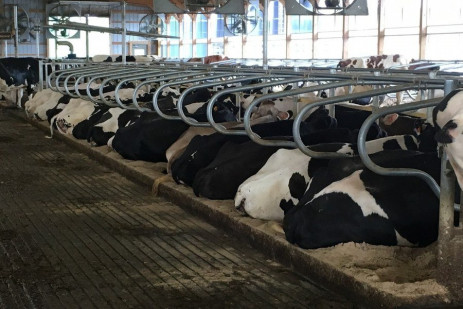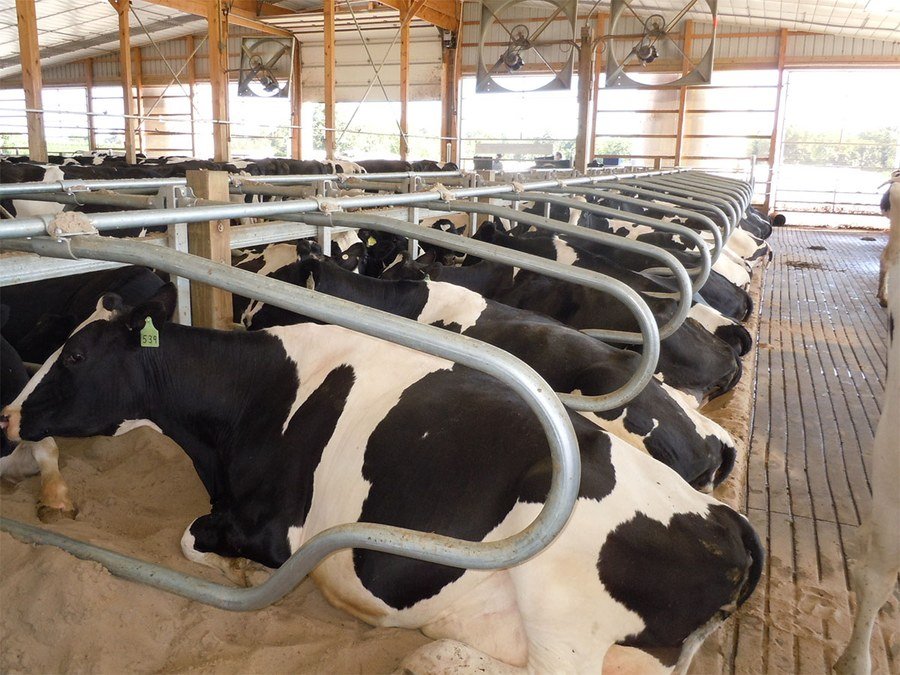



Is a Brisket Locator Really Necessary?
Properly positioned brisket locators provide correct resting space and minimize injury, writes Dan McFarland, Penn State Agricultural Engineer.
 When working with dairies to develop new, or to improve existing, freestalls a common question is: "Is a brisket locator really necessary?". Like many questions I am asked my response is "It depends".
When working with dairies to develop new, or to improve existing, freestalls a common question is: "Is a brisket locator really necessary?". Like many questions I am asked my response is "It depends".
Freestall brisket locators define the resting space available to cows and discourage forward movement when cows are resting to preserve lunge space and allow them to rise easily. Positioned properly, brisket locators work as intended but they are often installed to keep cows 'back' and manure off the rear of the stall.
Brisket locators can help improve stall cleanliness, but not providing sufficient resting space can lead to other problems including stall use reluctance, diagonal resting position, and increased rear hock injury.
Like other freestall measurements, position brisket locators to accommodate the largest cows in the group. Current resting space recommendations for large-framed dairy cows range from 68 to 72 inches, measured from the locator 'cow-side' to the 'end of the cushion'. For mattress and mat stall beds 'end-of-cushion' is the rear edge of the mattress or mat.
Cows need adequate space to rest comfortably – especially on lightly bedded mattresses and mat stall beds. Increased hock swelling and abrasions are not uncommon in cows that are resting with their rear-end even with or overhanging the rear curb. This position may put cows into an 'unsettled' or 'restless' posture when resting which creates more rear leg movement, scrubbing the hock in contact with the stall surface.
Cows resting with their rear-end a few inches forward of the rear curb puts them in a 'restful' posture greatly reducing their rear leg movement while resting and reducing the incidence of hock injury. This posture also encourages cows to bring their tails up onto the stall bed rather than the alley. Dairy cows rest 10 to 14 hours per day. With the amount of dry matter consumed daily cows will defecate while resting, therefore some manure may end up on the stall bed. This problem is easily resolved with more frequent stall grooming. Increased resting time and reduced hock injury typically outweigh this inconvenience.

These generously bedded sand freestalls have no brisket locators. Note cows resting just ahead of the exposed rear curb and tails up on the resting surface.
For generously bedded (inorganic or organic) freestalls, position brisket locators measuring from the inside rear curb to cow-side of the locator. Brisket locators made from concrete have become common in generously bedded freestalls to help position cows and reduce the total amount of bedding material needed. Not providing adequate resting length between the inside curb to locator edge can lead to front knee swelling and abrasions.
Favoring the upper side of the suggested resting length range, along with regular bedding intervals, can help maintain a layer of bedding between the knees and brisket locator. Well managed, generously bedded stalls can often forego a brisket locator since resting cow weight creates a slight depression discouraging forward movement. Adding smaller amounts of bedding more frequently will reduce variation of stall bed height and reduce sand waste compared to longer periods between bedding addition.
Modern brisket locators are fashioned from PVC pipe and some companies manufacture inverted U-shaped styles. Studies and observation indicate cows may extend one or both of their front legs forward when resting. Current recommendations suggest brisket locators should be no higher than four inches above the resting surface with mattress or mat stall beds. For generously bedded stalls, the brisket locator top should be no higher than four inches above the top of the rear curb.
Another consideration is the surface elevation just beyond the brisket locator. As cows rise, they typically place one foot forward to rise. The brisket locator should not be an obstacle to this motion, and the surface just beyond needs to have a similar elevation to the resting surface and offer good footing as well.
.jpeg)
During the renovation of these mattress-based head-to-head freestall rows the brisket locators were removed to allow more freedom of movement. The vertical 1 x 6 between the stall rows discourages cows from moving too far forward.
Properly sized, shaped, and positioned brisket locators can provide ample resting space and discourage forward movement while resting. Improperly sized, shaped, or positioned locators result in an uncomfortable resting space, diagonal resting, an obstacle to rising, and possible injury. Stalls without brisket locators may allow more freedom of movement and resting positions.
Freestalls with mattress and mat stall beds have different installation criteria than generously bedded freestalls. Many recent freestall installations with mattress, mat, and generously bedded stalls installed without brisket locators have noticed minimal issues. If challenges arise by providing 'too much' resting space, brisket locators can usually be added with little problem. So, are brisket locators necessary in freestalls? My answer is still "it depends".


